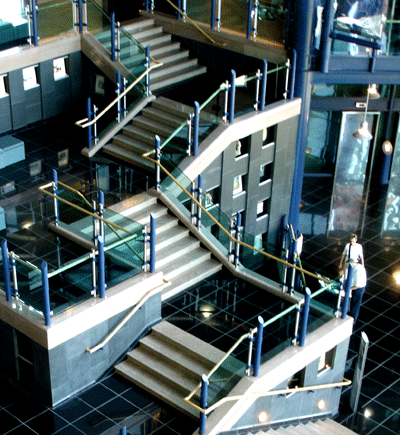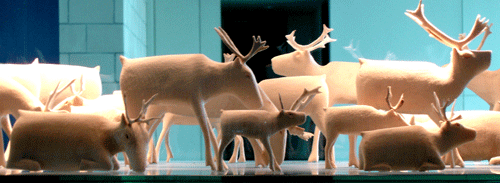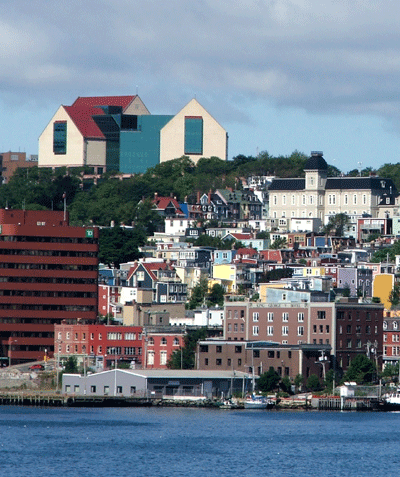
Tales of a 21st Century Gypsy
August 7, 2006.
The Rooms
Two days into my stay in Newfoundland, I realized I wasnít going to have enough time there. I wanted to visit St. Pierre et Miquelon, islands southwest of Newfoundland that are still French territory, and I wanted to cross the Straits of Belle Isle at the far end of the Great Northern Peninsula (or the Great Northern Pen, as the locals call it) to visit the Labrador coast. I was already at the easternmost corner of the island Ė indeed, Iíd just visited Cape Spear, the eastern most point in all of North America. That itinerary meant going down one long peninsula to the south west, another to the north east, and then another to the southwest to catch the ferry back to Nova Scotia. And Newfoundland isnít a small island Ė not to mention the price of gas in Canada! Either something had to give, or I didnít have time to dawdle as I had through Cape Breton. I decided, for a change, to travel efficiently. I didnít want to give up St. Pierre or Labrador, and I couldnít postpone my return to DC.
Or maybe I wouldnít. I had to be at a work meeting September 7th and 8th, in Washington. I could perhaps tell them theyíd have to fly me in, instead of getting there by road. But I decided not to. A few more weeks on the road wouldnít change anything, and Iíd have to give things up whenever I returned to live in a house. So I decided to be efficient.
Notwithstanding which, I decided to stay on another day in St. Johnís, to poke around the city, and head down to the bird sanctuary Tuesday instead of Monday. I spent most of the day at the Rooms, a museum of Newfoundland culture, history, art,

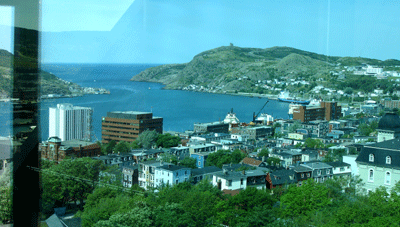 The high glass windows of the Rooms make for great views - and great reflections of those views.
The high glass windows of the Rooms make for great views - and great reflections of those views.
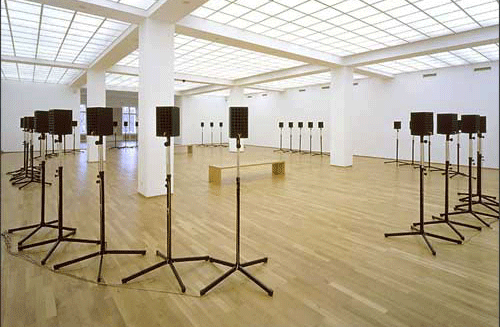 Photo pinched from the
Photo pinched from the 